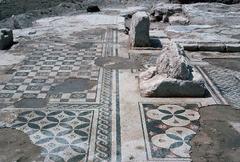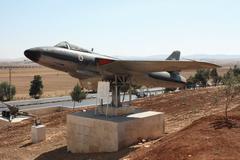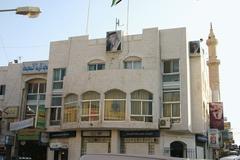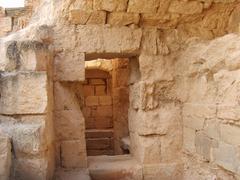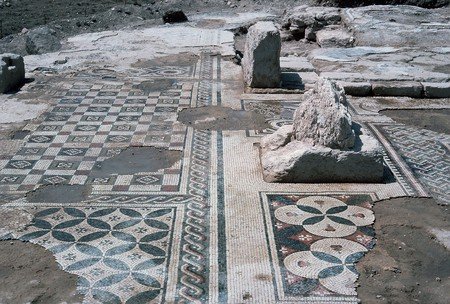
Visiting الرمثا: Hours, Tickets, and Historical Sites in Irbid, Jordan
Publication Date: 24/07/2024
Introduction to Visiting الرمثا
Nestled in the far northwest of Jordan, near the Syrian border, الرمثا (Al-Ramtha) in Irbid is a city steeped in rich historical and cultural heritage. It is a testament to the vibrant traditions, historical sites, and culinary delights that define this unique region. Whether you’re an avid historian, a food enthusiast, or simply looking to explore a lesser-known gem, الرمثا offers a diverse and immersive experience. This guide aims to provide comprehensive information about the cultural significance of الرمثا, including visiting hours, ticket prices, travel tips, and more. By diving into its historical context, traditional practices, culinary traditions, and various attractions, visitors can fully appreciate the depth and beauty of this remarkable city. (Ask Aladdin, Secret Israel)
Contents Overview
- Introduction
- Historical Context
- Traditional Practices and Folk Culture
- Music and Performing Arts
- Culinary Traditions
- Markets and Handicrafts
- Educational and Cultural Institutions
- Archaeological Sites
- Festivals and Celebrations
- Visitor Information
- Impact of Syrian Conflict
- Modern Cultural Dynamics
- Frequently Asked Questions (FAQ)
- Conclusion
Discover the Cultural Significance and Visitor Guide to Ar-Ramtha, Irbid, Jordan
Historical Context
Ar-Ramtha, believed to derive its name from a local desert plant, al-ramath, has a deep historical significance. Some biblical archaeologists identify it with the ancient Israelite city of Ramoth-Gilead. During the Roman and Byzantine periods, it was known as Ramatha, serving as a crucial link between various Roman colonies. The city’s strategic location made it a hub for trade and cultural exchange, significantly influencing its cultural landscape.
Traditional Practices and Folk Culture
Ar-Ramtha is renowned for its rich folk culture, particularly its traditional dances and poetry. The city is famous for the inherited ritual-poetries recited during wedding ceremonies and public affairs. One of the most notable cultural expressions is the Dabke, an Arab folk dance native to Ar-Ramtha. This dance is performed at various social gatherings and celebrations, reflecting the community’s spirit and unity.
Music and Performing Arts
The city has produced several prominent artists who have contributed to its cultural heritage. Notable figures include Hussein Al-Salman, Lil ZeeJo (Husam El-Zubi), Malik Allaham, Najem Al-Salman, and Mitaab Al-Saggar. These artists have played a significant role in preserving and promoting the traditional music and performing arts of Ar-Ramtha.
Culinary Traditions
Ar-Ramtha’s culinary scene is a vibrant reflection of its cultural heritage. The city is a hub for traditional Jordanian cuisine, with numerous restaurants and street vendors offering local delicacies such as mansaf, falafel, and kunafa. Visitors can immerse themselves in the flavors of Jordan while exploring the city’s lively food scene, experiencing the warmth and hospitality of the locals along the way.
Markets and Handicrafts
The vibrant markets of Ar-Ramtha are a testament to its rich cultural heritage. These markets offer a wide array of goods, from handcrafted souvenirs to fresh produce. The lively atmosphere provides a glimpse into the daily life of the city, offering a unique and authentic experience for travelers. The markets are not just places of commerce but also social hubs where people gather, exchange news, and maintain social bonds.
Educational and Cultural Institutions
One of the top attractions in Ar-Ramtha is the Al-Hussein Bin Talal University, a renowned educational institution that offers a glimpse into the academic life of the city. Visitors can explore the campus and admire the stunning architecture while learning about the university’s impact on the local community.
Archaeological Sites
Ar-Ramtha is home to several archaeological sites that offer a fascinating look into the region’s past. The ancient ruins of Gadara, for instance, provide insight into the ancient civilization that once thrived in the area. The well-preserved site includes an impressive amphitheater and intricate mosaics, reflecting the city’s historical significance.
Festivals and Celebrations
The cultural calendar of Ar-Ramtha is filled with various festivals and celebrations that highlight its rich heritage. These events often feature traditional music, dance, and food, providing an immersive cultural experience for visitors. The festivals are a great way to witness the community’s vibrant spirit and deep-rooted traditions.
Visitor Information
- Visiting Hours: Most historical sites and markets are open from 9 AM to 5 PM, though it’s best to check specific attractions for exact times.
- Ticket Prices: Entry fees vary by site, with most archaeological sites charging a nominal fee. It’s advisable to carry local currency for ticket purchases.
- Travel Tips: Ar-Ramtha is accessible by road from major cities like Amman and Irbid. Public transportation and taxis are readily available. Dress modestly and be respectful of local customs.
- Nearby Attractions: Consider visiting the nearby city of Irbid, known for its museums and vibrant cultural scene. The Yarmouk River and Ajloun Forest Reserve are also popular destinations for nature lovers.
- Accessibility: Most public spaces and tourist sites are wheelchair accessible, though it’s best to confirm in advance.
Impact of Syrian Conflict
Before the outbreak of war in Syria in 2011, Ramtha’s economy depended significantly on imports from Syria. This trade, both licit and illicit, was facilitated by Jordanian drivers known as ‘bahhara’ (sailors). However, the conflict has disrupted this trade, leading to increased unemployment and poverty in Ramtha. Despite these challenges, the city has played a significant role in helping refugees fleeing the Syrian Civil War, showcasing its resilience and humanitarian spirit.
Modern Cultural Dynamics
In recent years, Ar-Ramtha has seen a blend of traditional and modern cultural dynamics. The city’s cultural scene continues to evolve, with new influences blending with traditional practices. This fusion is evident in various aspects of daily life, from music and dance to culinary practices and social interactions.
Frequently Asked Questions (FAQ)
Q: What is the best time to visit Ar-Ramtha? A: The best time to visit Ar-Ramtha is during the spring (March to May) and autumn (September to November) when the weather is pleasant.
Q: Are guided tours available? A: Yes, guided tours are available for most historical and archaeological sites. It’s recommended to book in advance.
Q: What are some photographic spots in Ar-Ramtha? A: The ancient ruins of Gadara and the vibrant local markets are popular spots for photography.
Conclusion
Ar-Ramtha’s cultural significance is deeply rooted in its historical context, traditional practices, and vibrant community life. The city’s rich heritage, reflected in its music, dance, culinary traditions, and markets, offers a unique and authentic experience for visitors. Despite the challenges posed by the Syrian conflict, Ar-Ramtha continues to thrive as a cultural hub, preserving its traditions while embracing modern influences. Be sure to download the Audiala mobile app, check out other related posts, or follow us on social media for more updates. (Trek Zone, Jordan Traveler)
Sources and Further Reading
- Trek Zone. (n.d.). Retrieved from Trek Zone
- Ask Aladdin. (n.d.). Retrieved from Ask Aladdin
- Secret Israel. (n.d.). Retrieved from Secret Israel
- Jordan Traveler. (n.d.). Retrieved from Jordan Traveler
